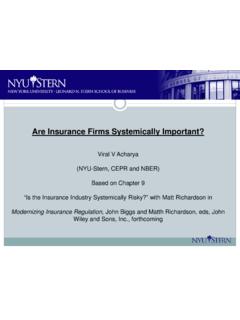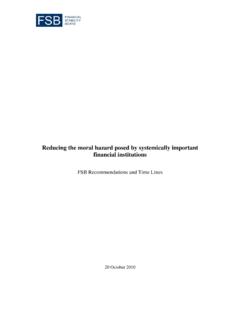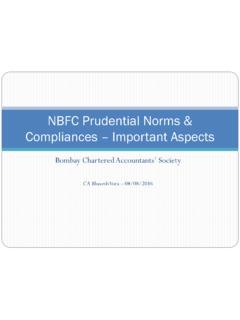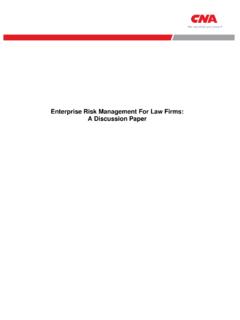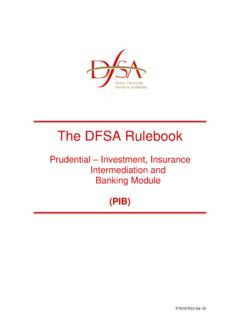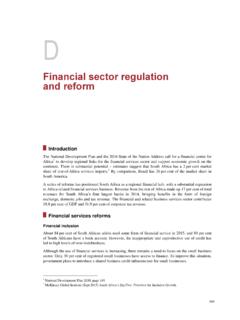Transcription of Basel III summary - Risk Quest
1 Basel III summaryIn December 2010, the Basel Committee on Banking Supervision (BCBS) published its reforms on capital and liquidity rules to address problems, which arose during the financial crisis. This whitepaper summarizes the Achterberg & Hans HeintzOctober 201221. IntroductionIn December 2010, the Basel Committee on Banking Supervision (BCBS) published its reforms on capital and liquidity rules to address problems, which arose during the financial crisis. One of the main reasons the crisis became so severe was that the banking sectors of many countries had built up excessive on and off balance sheet leverage. This was accompanied by the wearing down of quantity and quality of capital. Therefore the banking system was unable to absorb the resulting losses. The objective of the BCBS to strengthen the regulatory capital framework resulted in the Basel III framework.
2 The framework consists of two separate policy documents (BCBS 2010a) and (BCBS2010b) wherein capital and liquidity standards are set III strengthens the Basel II framework rather than replaces it. Whereas Basel II focused on the asset side of the balance sheet, Basel III mostly addresses the liabilities, capital and li-quidity. The new framework will (a) impose higher capital ratios, including a new ratio focusing on common equity, (b) increase capital charges for many activities, particularly involving coun-terparty risk and (c) narrow the scope of what constitutes Tier 1 (T1) and Tier 2 (T2) Basel framework (continues to) consists of three pillars:Pillar 1 is the part of the new Basel Accord, which sets out the calculations of regulatory capital requirements for credit, market and operational risk.
3 Pillar 2 is the part of the new Basel Accord, which sets out the process by which a bank should review its overall capital adequacy and the process under which the supervi-sors evaluate how well financial institutions are assessing their risks and take appro-priate actions in response to the 3 is the part of the new Basel Accord, which sets out the disclosure require-ments for banks to publish certain details of their risks, capital and risk manage-ment, with the aim of strengthening market discipline. This is intended to improve effective risk management by allowing for comparison of the performance across sectors through these disclosure requirements. This whitepaper addresses the changes of Basel III concerning Pillar 1 and Pillar 2 and the impact hereof. The remainder of the article is structured as follows: Section 2 discusses the new capital requirements.
4 Subsequently the most important changes with respect to risk coverage are discussed in section 3. Sections 4 and 5 set out the metrics concerning leverage and liquidity respectively. The impact the changes are explained in section 6. For some comments on the legal authority of the frame-work, please refer to section 7. The time horizon is shortly illustrated in section 8. For suggestions and critics about the new Basel framework refer to section 9. The bibliography completes this exposition. White paper: Basel III December 201232. CapitalCapital serves as a buffer to absorb unexpected losses and to fund ongoing activi-ties of the are required by their regulators to hold minimum amounts of capital. Capi-tal ratio s depend on two things; the capital buffer and risk weighted improve the quality, consistency and transparancy of the capital base the fol-lowing changes are proposed under the new Basel III framework:Increase of requirements on minimum Tier 1 (T1) capital.
5 Increase in the standards for instruments to qualify as T1 capital. Harmonisation of Tier 2 (T2) capital instruments and the elimination of Tier 3 (T3) of appropriate capital deductions such as minority interests and de- ferred tax new minimum capital ratio s are displayed in Figure 1. These are percentages of total risk-weighted assets. Figure 1. Capital requirementsWhite paper series RiskQuest4 The minimum requirement for common equity will be raised from the current 2% level to The T1 capital requirement will increase from 4% to 6%. The capital conservation buffer above the regu-latory minimum requirement must be calibrated at and be met with common equity. A coun-tercyclical buffer within a range of of common equity or other fully loss-absorbing capital is implemented according to national circumstances.
6 This buffer is to be implemented by the national supervisor (for example DNB in the Netherlands) when there is excessive credit growth in the economy. These buffers are designed to restrict the bank s ability to distribute its earnings until the buffers are rebuilt. Also, these buffers are not strictly additional minimum capital require-ments and may be drawn down during periods of stress. Linked to the discussions on crisis management is the question of how to handle the Too Big to Fail problem. Systematically important financial institutions (SIFIs) are global financial ser-vices firms - almost exclusively banks - so big that governments believe they will be forced to rescue these institutions rather than risk lasting damage to the world financial system. SIFIs should have loss absorbing capacity beyond the standards announced.
7 The additional loss absorbency requirements are to be met with a progressive Common Equity Tier 1 (CET1) capital requirement ranging from 1% to , depending on a bank s systemic importance. For banks facing the highest SIB (systemically important bank) surcharge, an additional loss absorbency of 1% could be applied as a disincentive to increase materially their global sys-temic importance in the future. Tier 1 capital is intended to ensure that each bank remains a going-concern . It is the highest quality form of a bank s capital as it can be used to write off losses. It is composed of core capital, which consists primarily of common equity (common stock and retained earnings) and some equity-like debt instruments, which are both subordinated and dis-cretionary (discretionary dividends are those paid, not by contractual obligation, but at the discretion of the issuer of the underlying instruments).
8 Under Basel III, innovative hybrid capital instruments with step-up clauses are being phased out. Not included ( deductions) in common equity are among others goodwill, minority interest, de-ferred tax assets, provisioning shortfalls, bank investments in its own shares and bank investments in other banks, financial institutions and insurance companies (to avoid double counting of equity). The exclusion of goodwill is important, as it can t be included in capital available to absorb losses. The mixing of intangibles with actual capital is not admissible. The exclusion of minorities is sensible because minority interests can support the risks in the subsidiary to which they relate but are not available to support risks in the group as a whole. In view of this, Basel III sets out specific criteria for the inclusion of minority interest in CET1, T1 or T2 capital and how it must be calculated.
9 The exclusion of deferred tax assets is also sensible for banks likely to get in trouble, White paper: Basel III December 20125although it is clearly discriminatory against banks that are well run with reliable future income. Tier 2 capital is intended to protect depositors in the event of insolvency, and is thus re-categorised as a gone-concern reserve. Given the Basel III focus on in-centives to redeem only dated subordinated debt remains eligible as T2 capital. As mentioned before, Tier 3 capital is to be completely abolished. T3 capital is short-term subordinated debt and was used under Basel II to support market risk from trading banks will need to issue common equity to meet the new regulatory min-imums. Recently, regulators, banks and investors are focusing more and more on contingent convertible (CoCo) instruments and their possible role in a bank s capital structure.
10 The BCBS has expressed concern that earlier hybrid securities did not provide enough capital support in times of stress. As a result the BCBS requires internationally active banks to include in all non-common instruments, intended to qualify as additional T1 or T2 capital, a provision that converts the instruments to common equity in the event the bank is deemed non-viable or requires capital injection. This is the so-called Non-Viability Contingent Capital (NVCC) provision. In other words, the instrument will convert to common equity, or be written off, when the bank is at the verge of becoming a gone-concern . The BCBS is requiring these low trigger conversions to ensure that, in the event of another banking crisis, holders of investment in the banks rather than taxpayers, bear the financial burden.
